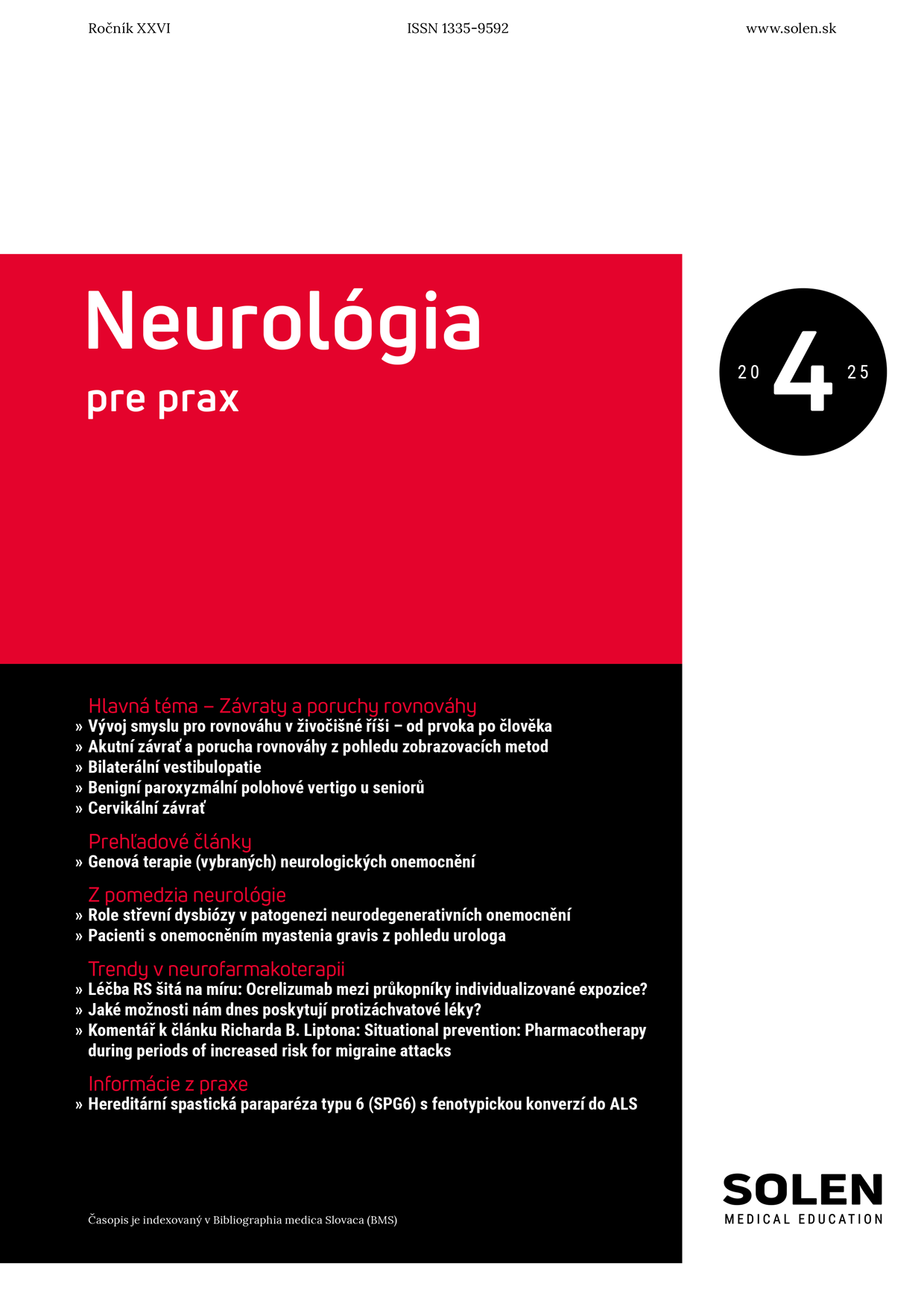Neurológia pre prax 6/2014
Pompe disease – clinical case report
Glycogen storage disease II type (GSD II, m. Pompe) is an autosomal recessive disorder with an incidence of about 1: 60 000. It is caused by a deficiency of lysosomal hydrolytic enzyme acid maltase (alpha-glucosidase), which is responsible for degradation of intralysosomal glycogen. The structural gene for alpha-glucosidase was localized on chromosome 17q23. According to the clinical manifestations and age of the first symptoms manifestation there are two main types of the disease. The infantile form of GSD II affects children in the first months of life. They are significantly hypotonic (” floppy baby”), respiratory muscles are also affected massive cardiomegaly, can be prominent as well as macroglossia and hepatomegaly. Disease progresses rapidly and death usually occurs within first year of age due to cardiorespiratory failure. Adult form is connected with disabilities of skeletal muscles involving respiratory muscles and diaphragm. Progression is slow, the myocardium is not affected. The term juvenile form is referred to a number of transitional forms of the disease with the first manifestation from 6 months to 2 years of age with disabilities of skeleton muscles, cardiomegaly, hypotonia, hypoventilation and death usually at the end of the second decade. aboratory we find elevation of CK, AST, ALT, LDH, there are not variations in the metabolism of carbohydrates. The EMG can be normal, but usually a myopathic record with complex repetitive discharges is found. Conduction velocity of motor and sensory nerves are normal. Muscle biopsy may also be normal, but it also detects 10-fold higher glycogen content of normal structure, which is located in lysosomes and intracellular. Reduced alpha-glucosidase activity can be confirmed in cultivated fibroblasts, lymphocytes, leukocytes and in muscle cells. Today is also available alpha glucosidase activity examination in a drop of dry blood. The definitive diagnosis is confirmed by finding specific mutations in genetic testing. In recent years, it is possible to treat with enzyme replacement therapy (ERT). The disposal is Myozyme preparation, which is a recombinant, purified human enzyme that is administered intravenously at a dose of 20 mg/kg/2 weeks. The case report presents the experience in diagnosis and enzyme replacement therapy in our 44-year-old patient with GSD II type.
Keywords: glycogenosis II type Pompe disease, cardiomyopathy, hypotonia, myopathy.

















